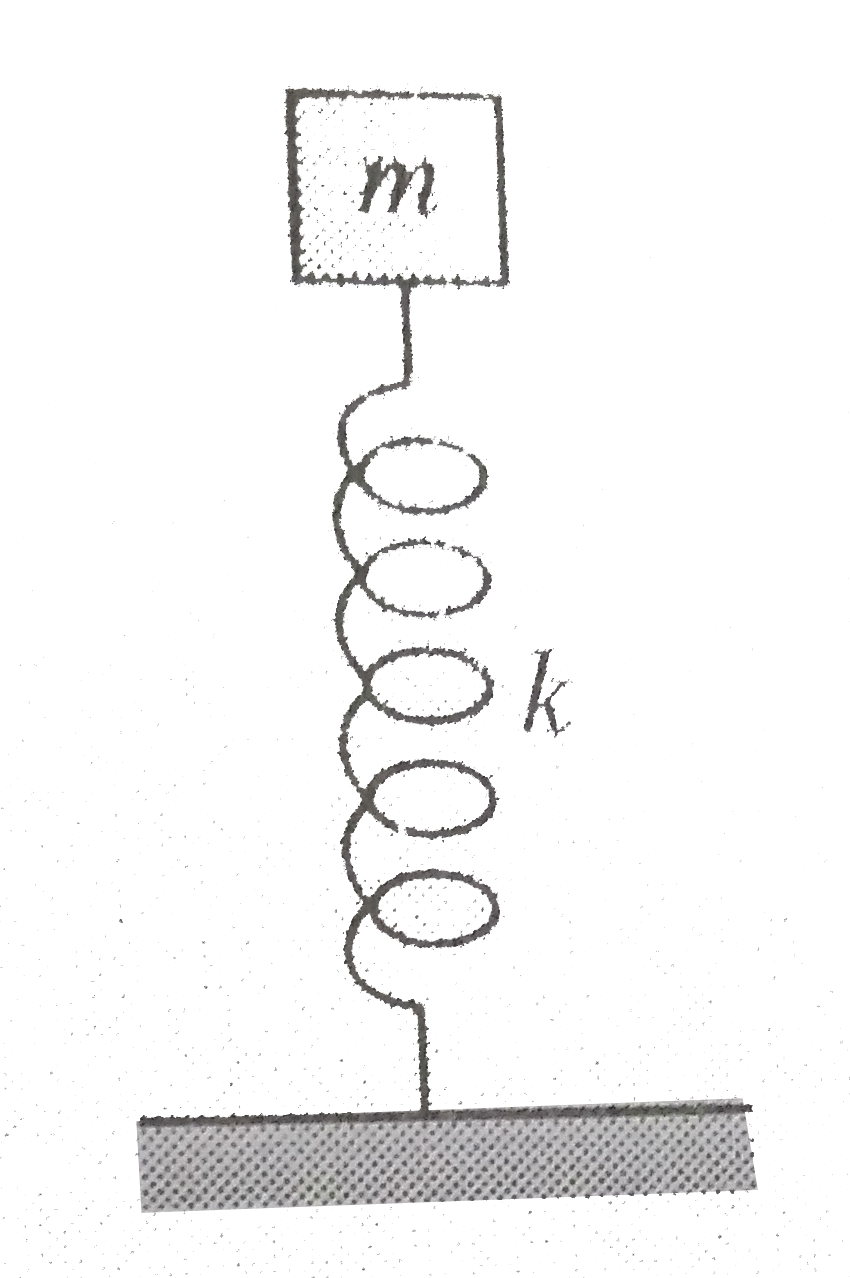An object of mass m, oscillating on the end of a spring with spring constant k has amplitude A. its maximum speed is
A√k/m
A2k/m
A√m/k
Am/k
The correct Answer is:A
To find the maximum speed of an object of mass m oscillating on the end of a spring with spring constant k and amplitude A, we can follow these steps:
1. Understand the Motion: The object is undergoing simple harmonic motion (SHM). The displacement x of the object can be described by the equation:
x(t)=Asin(ωt+ϕ)
where A is the amplitude, ω is the angular frequency, and ϕ is the phase constant.
2. Differentiate to Find Velocity: The velocity v(t) of the object is the derivative of the displacement with respect to time:
v(t)=dxdt=Aωcos(ωt+ϕ)
3. Determine Maximum Speed: The maximum speed occurs when cos(ωt+ϕ) is at its maximum value, which is 1. Therefore, the maximum speed vmax can be expressed as:
vmax=Aω
4. Relate Angular Frequency to Spring Constant: The angular frequency ω for a mass-spring system is given by:
ω=√km
where k is the spring constant and m is the mass of the object.
5. Substitute for Maximum Speed: Now, substitute ω into the equation for maximum speed:
vmax=A√km
6. Final Expression: Thus, the maximum speed of the object is:
vmax=A√km
Conclusion:
The maximum speed of the object oscillating on the end of the spring is given by:
vmax=A√km
x(t)=Asin(ωt+ϕ)
where A is the amplitude, ω is the angular frequency, and ϕ is the phase constant.
v(t)=dxdt=Aωcos(ωt+ϕ)
vmax=Aω
ω=√km
where k is the spring constant and m is the mass of the object.
vmax=A√km
vmax=A√km
The maximum speed of the object oscillating on the end of the spring is given by:
vmax=A√km
Topper's Solved these Questions
- OSCILLATIONSBook:RESNICK AND HALLIDAYChapter:OSCILLATIONSExercise:Problems
Explore 39 Videos
- MOTION IN TWO AND THREE DIMENSIONSBook:RESNICK AND HALLIDAYChapter:MOTION IN TWO AND THREE DIMENSIONSExercise:PRACTICE QUESTIONS (MATRIX-MATCH)
Explore 10 Videos
- PHOTONS AND MATTER WAVESBook:RESNICK AND HALLIDAYChapter:PHOTONS AND MATTER WAVESExercise:PRACTICE QUESTIONS(Integer Type)
Explore 4 Videos
Similar Questions
A block of mass m suspended from a spring of spring constant k. Find the amplitude of S.H.M.
View SolutionA block of mass m held touching the upper end of a light spring of force constant K as shown in figure. Find the maximum potential energy stored in the spring if the block is released suddenly on the spring.

View Solution
Knowledge Check
Aparticle of mass m oscillating as given by U(y)=K|y|3 with force constant K has an amplitude A. The maximum velocity during the oscillation is proportional to
AABA3CA3/2DA1/2A 0.20kg object mass attached to a spring whose spring constant is 500N/m executes simple harmonic motion. If its maximum speed is 5.0m/s, the amplitude of its oscillation is
A0.0020mB0.10mC0.20mD25mA 0.25kg block oscillates on the end of the spring with a spring constant of 200N/m. If the oscillation is started by elongating the spring 0.15m and giving the block a speed of 3.0m/s, then the maximum speed of the block is
A0.13m/sB0.18m/sC3.7m/sD5.2m/s
Two blocks of masses m, and m, are connected to the ends of a spring of spring constant k. System is kept at rest on a frictionless horizontal floor with spring in its natural length. Both the blocks are pulled along opposite directions with forces of same magnitude F. Calculate maximum elongation of spring and distances travelled by the blocks during this motion.
View SolutionA block of mass m moving at a speed v0 compresses a spring of spring constant k as shown in the figure. Find (a) the maximum compression of spring and (b) speed of the block when the spring is compressed to half of maximum compression.
View SolutionA block of mass m hangs from a vertical spring of spring constant k. If it is displaced from its equilibrium position, find the time period of oscillations.
View SolutionA block of mass m is attached to one end of a mass less spring of spring constant k. the other end of spring is fixed to a wall the block can move on a horizontal rough surface. The coefficient of friction between the block and the surface is μ then the compession of the spring for which maximum extension of the spring becomes half of maximum compression is .
View SolutionA mass m, which is attached to a spring with spring constant k, oscillates on a horizontal table, with amplitude A. At an instant when the spring is streched by √3A/2, a second mass m is dropped vertically onto the original mass and immediately sticks to it. what is the amplitude of the resulting motion-
View Solution
